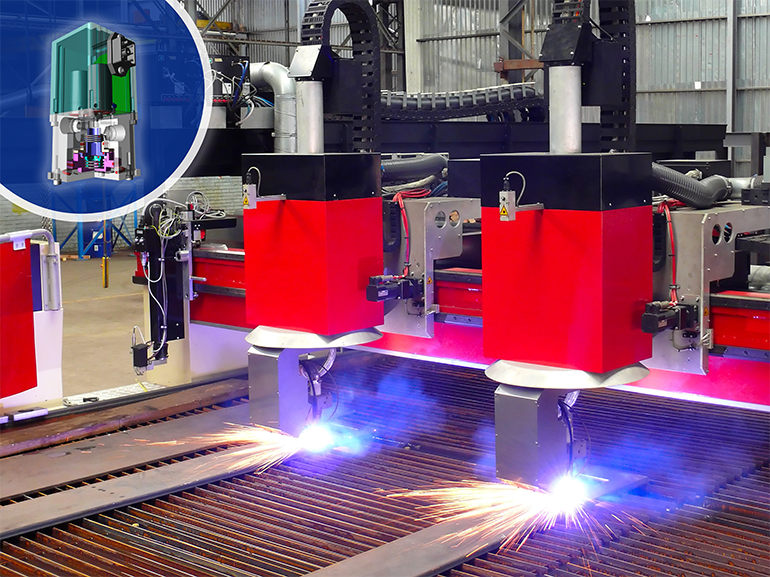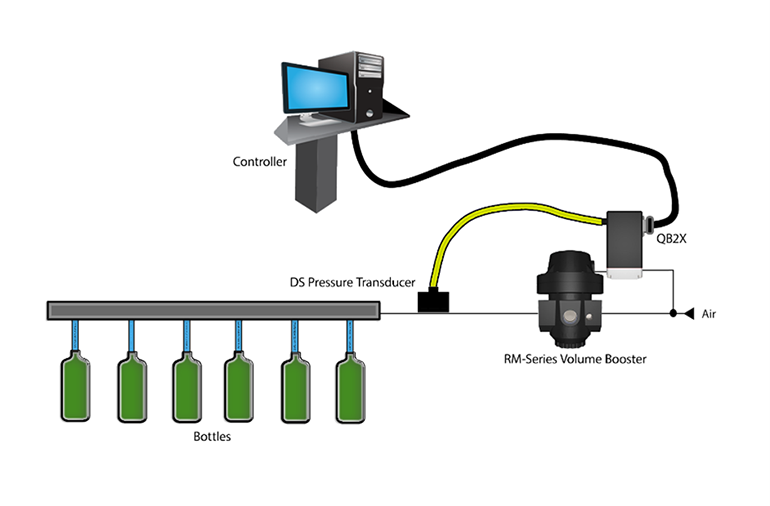
Pneumatic pressure control devices to increase your accuracy, efficiency, and safety
Precision, It’s Not for Everyone
Less waste, increased cycle speed, and a lower need for maintenance, down time, and human interaction/monitoring are only a few great reasons to improve the precision of your application. If these sound like objectives worthy of pursuit, electro-pneumatic control devices could be just the answer you’ve been searching for.
Why Pneumatics?
Safety, simplicity, and cleanliness, these are the factors that make pneumatics the choice of many industries. The addition of electronic control offers a level of accurate, repeatable and reportable control unmatched by manual devices. It also decreases potential for human error and makes it easier to implement more automation initiatives.
What’s in a Name?
Our devices take an electronic command signal received from a PLC or other controller, in either 0-10 VDC or 4-20 mA, and convert that into a proportionally equivalent pneumatic output based on their configured range. Example: if a 0-10VDC pressure regulator with a configuration range of 0-100 PSI is given a command signal of 8VDC the output will be 80 PSI. Precision proportional pneumatic control, we’ll stake our name on it.
Closing the Loop
With the proper amount of oversight and experimentation, some degree of accuracy can usually be dialed in, after all, even a broken clock is right twice a day. But how do you ensure a device is repeatedly accurate? Our electro-pneumatic devices use a system of checks and balances called “Closed Loop” control. As the command signal is provided to the device, an internal pressure sensor confirms the output delivered matches the signal. This feedback ensures output pressure remains consistent even during changes in supply pressure and/or downstream pressure fluctuations. Each and every one of Proportion-Air’s full line of pressure regulators and flow controllers offers closed loop technology.

An external pressure transducer provides 2nd loop feedback to the pressure regulator right before the bottle-making process
We’ll Keep You in the (2nd) Loop
In addition to closed loop technology, many of our devices offer the option to receive 2nd loop feedback. Functionally, this is exactly the same as the internal first closed loop, but it allows data acquisition and pressure output confirmation from external pressure transducers further downstream and closer to the process. The 2nd loop feedback can also be used in combination with an external volume booster to confirm output in higher flow applications.
Fast is Fine, but Accuracy is Everything – Wyatt Earp
Our full line of customizable electro-pneumatic and flow control devices offers extremely accurate control, often down to fractions of a percent. We even have a line of ultra-precise, high resolution valves that boast resolution of down to +/- 0.005% of full scale for the most sensitive applications like microfluidics where μms (micrometers) matter.
Letting Off Steam (Pressure)
Burling Valve process control pressure regulators are built to withstand the toughest industrial processes. Pressure reducing options are available in spring-loaded and dome-loaded models, including a mechanically-piloted dome-loaded version. Back pressure options include spring-loaded and dome-loaded models. Burling Valve products feature top entry maintenance and quick change trim for easy maintenance and repair. Burling Valves can also be piloted by Proportion-Air devices for accurate, repeatable electronic control.
Protect-Air: It’s a Safe Bet
Protect-Air USA miniature safety regulators limit the operation of pneumatic tools and compressed gas systems. These pre-set miniature regulators are tamper-proof, and cost effective, are easy to install in any factory or laboratory environment. Protect-Air products are available in a variety of sizes and can control the output pressure of pneumatic tools like blow guns, drills, nail guns, hammers, grinders, wrenches, paint sprayers, riveters, compressors and other similar machinery.
Sponsored content by Proportion Air
Filed Under: Sponsored Content